Some of the links in this post may be affiliate links.
Does your moth orchid, or Phalaenopsis, have droopy leaves (and maybe even wrinkled leaves) and you’re not sure what’s causing it? And you don’t know how to fix it?
Keep reading because I will tell you the various causes of of this issue and the 1 thing that you can do to fix the situation!
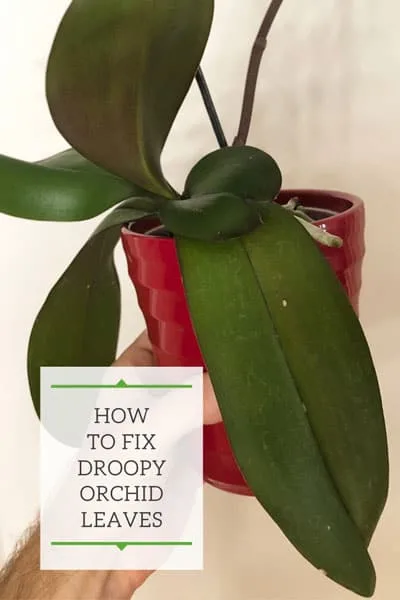
Droopy and wrinkled orchid leaves are cause by 1 critical fault in culture. And that is watering!
Table of Contents
Causes of Droopy Orchid Leaves
In plain and simple terms, the cause of the majority of all droopy and wrinkly orchid leaves is improper moisture levels for your plant.
To complicate matters, this can happen if your Phalaenopsis orchid is kept too dry AND also when it is kept too wet! And this can vary quite dramatically depending on the potting media that you are using. Bark mix will dry out much more quickly than sphagnum moss, for example.
So, how do you know the difference? The solution is below.
Keeping Your Orchid Too Dry – Underwatering
The answer is quite simple. If your orchid’s bark mix or sphagnum moss is kept too dry for long periods of time, it will become dehydrated and the lower leaves will be the first ones to suffer.
Keep this up even longer, and the whole plant will eventually droop. Your dehydrated orchid will first start to show limp leaves. Then your orchid’s leaves will wrinkle, and then finally, you will start to have yellow leaves at the base of the plant.
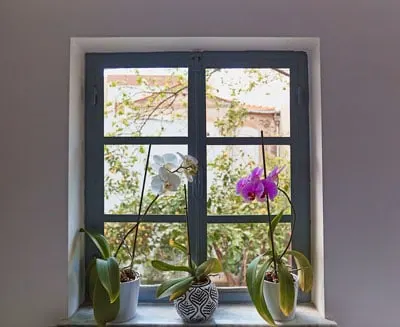
Phalaenopsis orchids do not like to go completely dry, especially for extended periods of time. This is also one of the main reasons for orchid bud blast.
Keeping Your Orchid Too Wet – Overwatering
On the other hand, if you keep your orchid’s potting medium wet for too long, it will suffer root rot.
Once the orchid roots start rotting out, it can’t take up water through its roots anymore, and thus you are also dehydrating your plant and it will result in droopy, wrinkled leaves!
It makes senses if you think about it this way, right?
Too Dry or Too Wet?
I’ll tell you exactly what I’d like you to do when you notice that your orchid leaves are limp and wrinkled.
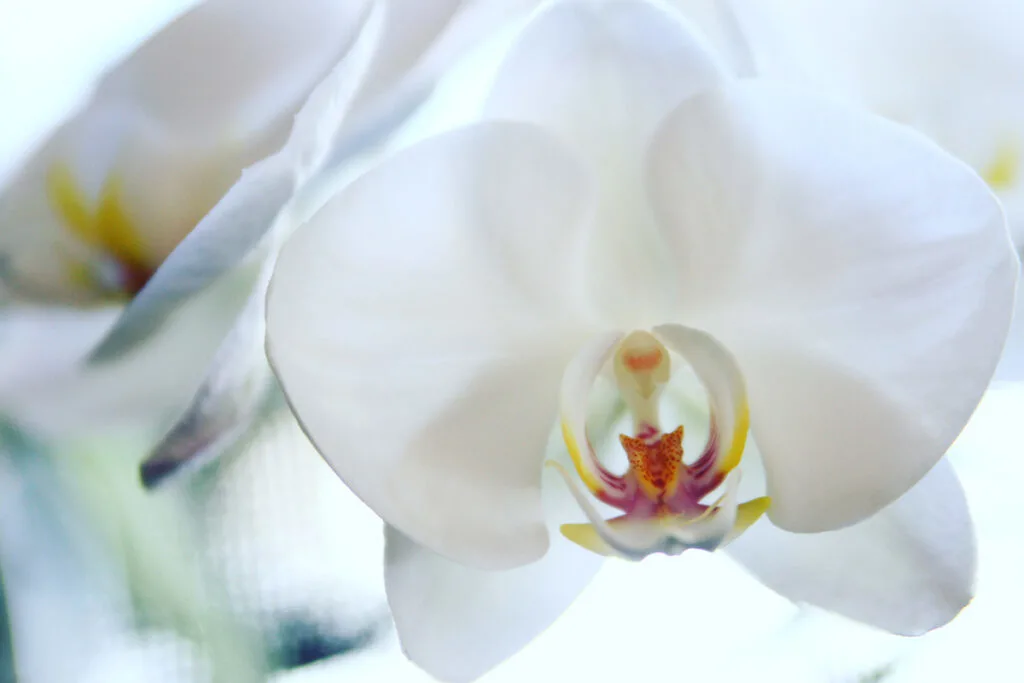
I’d like you to feel your potting medium. Whether it is bark or sphagnum moss. Stick your finger in the pot.
Is it bone dry? Or is it wet? Remember, keeping your orchid too dry for too long OR too wet for too long will cause the same issue.
If you already know what you did as far as keeping it too dry or too wet, great! If not, I’d like you to look at the roots. If you can, take the plant out of its pot and inspect the roots.
OR, if you use clear plastic pots (which I LOVE for orchids), look through the pot and inspect the roots. I buy mine on Amazon.
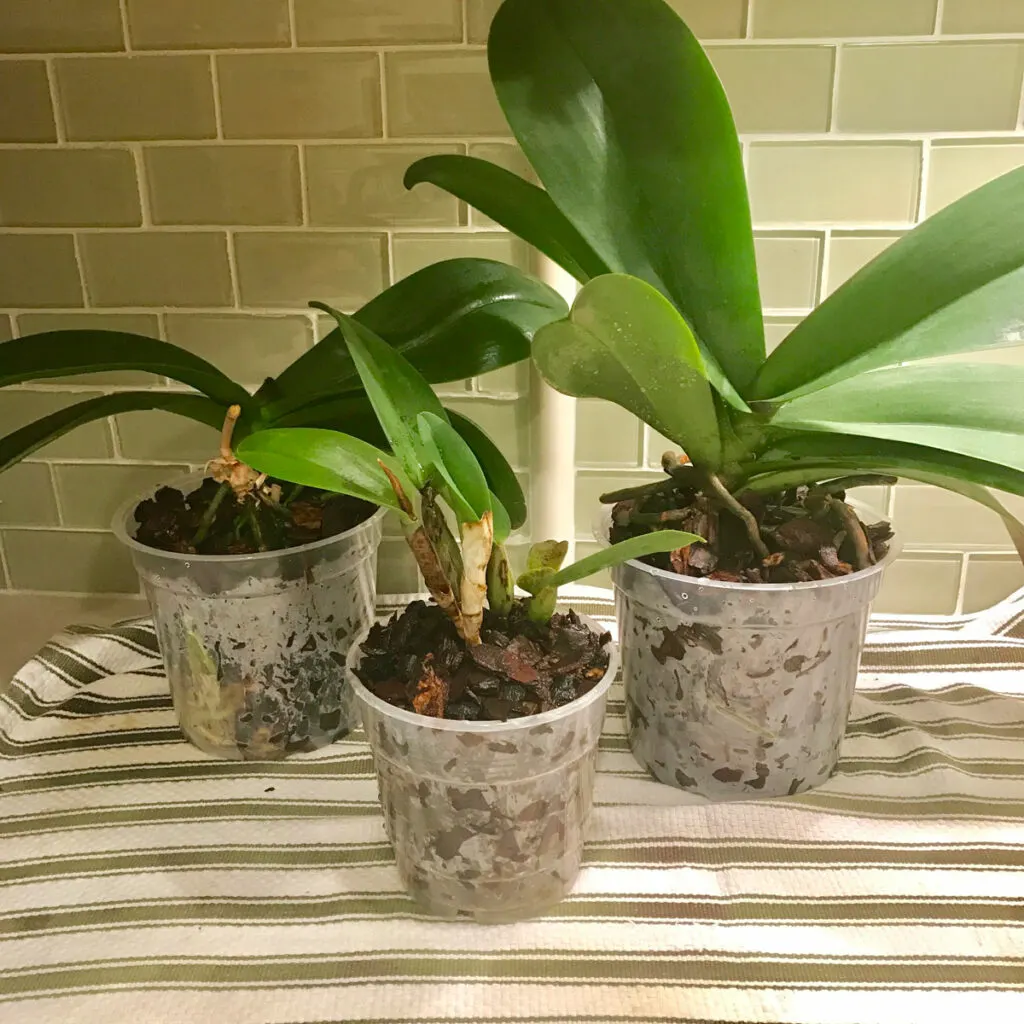
I love them because you can clearly see the root health of your orchid and also help you determine if anything unusual is going on. The health of your orchid’s root system is one of the most important things you should be keeping an eye on.
If your roots inside the pot are a bit wrinkled, shriveled and dry themselves, this means that you have kept your orchid way too dry.
I’m not just talking about the aerial roots…I’m talking about the roots inside the pot. Aerial roots will need special attention because these can easily dehydrate if you don’t water those too.
You can still have an orchid whose roots are rotting inside the pot, but has dehydrated aerial roots if you never water those aerial roots. So don’t get the two confused! There is a difference! I will tell you how to properly water an orchid later.
If, on the other hand, your roots are brown and mushy, and pull away easily from the plant, then your plant has stayed too wet for too long.
Healthy roots should be plump, firm to the touch, and usually a silvery gray color when they are dry, and turn greenish when wet.
Next, let me talk about what you can do to revive your droopy, wilted orchid and then I’ll get into causes of why your plant stayed either too dry or too wet for too long.
If you want to learn all about how to get your orchid to rebloom reliably and have healthy, thriving moth orchid plants, don’t miss my signature, online orchid care course, Become an Orchid Master. It also includes bonuses with support from me, personally, to guide you in your orchid journey!
Reviving Your Orchid
How to Properly Water an Orchid
If you’ve determined that your orchid has stayed too dry, the “treatment” is simple! You’re going to have to UP your watering game when it comes to fixing your limp orchid leaves.
You can water in one of two ways:
- Take your plant to the sink. Using tepid water, thoroughly soak ALL of the potting medium for a good 15-30 seconds. You can not add too much water because the excess will drain away through the drainage holes. Don’t forget to wet the aerial roots too. Make sure dislodge any water that is stuck between leaves in order to avoid root rot.
- The second method is to let your plant soak. Set your potted orchid inside another pot, or even a bucket, with no drainage hole. Add water until water reaches the rim of the pot. Allow your plant to soak for 15-30 minutes. Discard the excess water.
If your orchid is extremely dehydrated, you will want to choose the second method to water, but leave the plant soaking for a few hours or even overnight.
And don’t worry, this will not rot your plant out! If you do this, discard all the excess water.
You may need to do this every time you water until your orchid is healthy again.
For the orchid below, that I rehabilitated for a friend, it only had two full sized leaves when I received it and they were droopy and leathery.
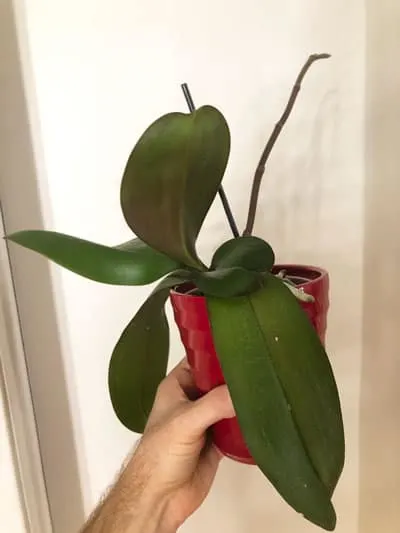
This plant was extremely dehydrated and I used method 2 for watering.
After some intensive care and time, it grew new leaves, which are nice and firm and upright and is even flowering now!
The lower leaves, although they still stayed in a lower position, are not wrinkly anymore and the plant is healthy.
What about if your orchid has been kept too wet and most of its root system has rotten out?
Reviving an Overwatered Orchid
If your plant’s root system is mostly rotted out, you will need to clean up your orchid’s roots and repot your orchid. Cut off any of the rotten roots before repotting. Severe root loss is one of the most common reasons for droopy foliage.
It will likely need to be placed in a smaller pot. If it is in a smaller pot already (such as a 3.5″ or 4″ pot), you can keep it in the same sized pot.
Instead of regurgitating all the repotting steps here, check out my Illustrated Guide on How to Repot an Orchid blog post where I show you step by step!
Lastly, I’d like to finish off with some common causes of why your orchid stayed either too wet or too dry.
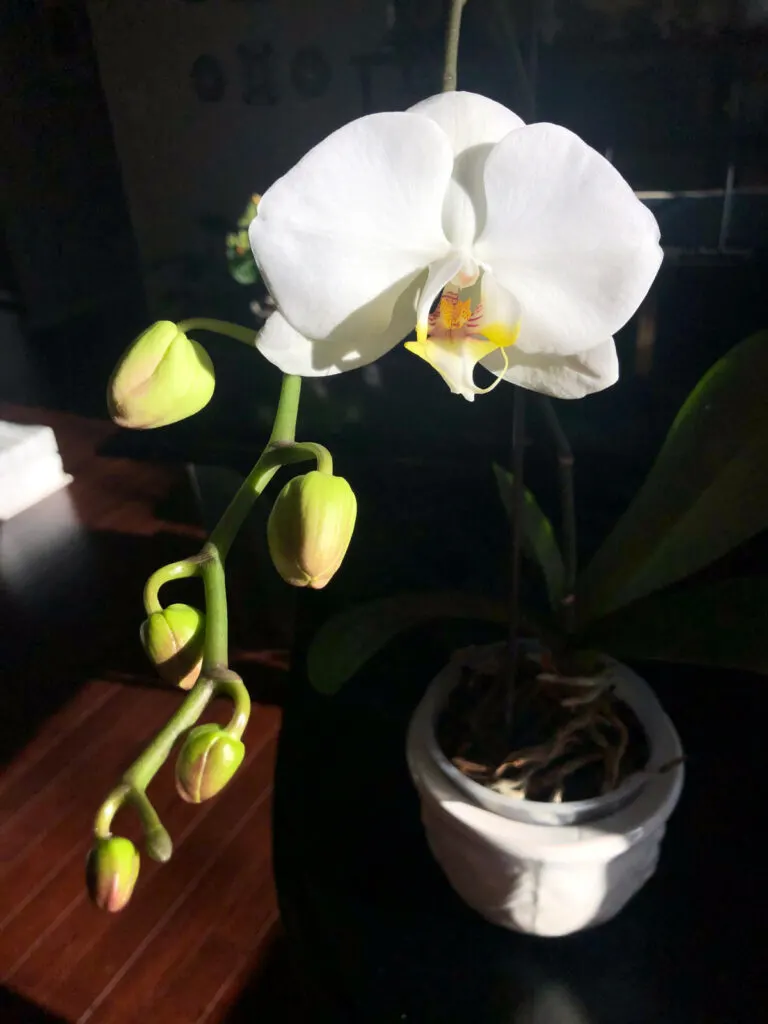
Causes for Dry Orchids
- Perhaps you’re not watering thoroughly enough. Or worse yet, you are watering with ice cubes! I feel so strongly about this that I wrote a blog post on why you should not use ice cubes to water orchids.
- You repotted your orchid but didn’t pre-soak the bark mix in water to condition the bark mix.
- You may have used bark chunks that are way too big for your plant. Or perhaps didn’t pack the mix in properly and left numerous gaps in the potting mix.
- Your bark mix may have disintegrated and washed away and your pot is mostly just roots. It is hard to keep an orchid in this condition hydrated.
- Lastly, you might just have kept your potting medium dry for much too long in between watering sessions.
And many times, it is a combination of the above factors!
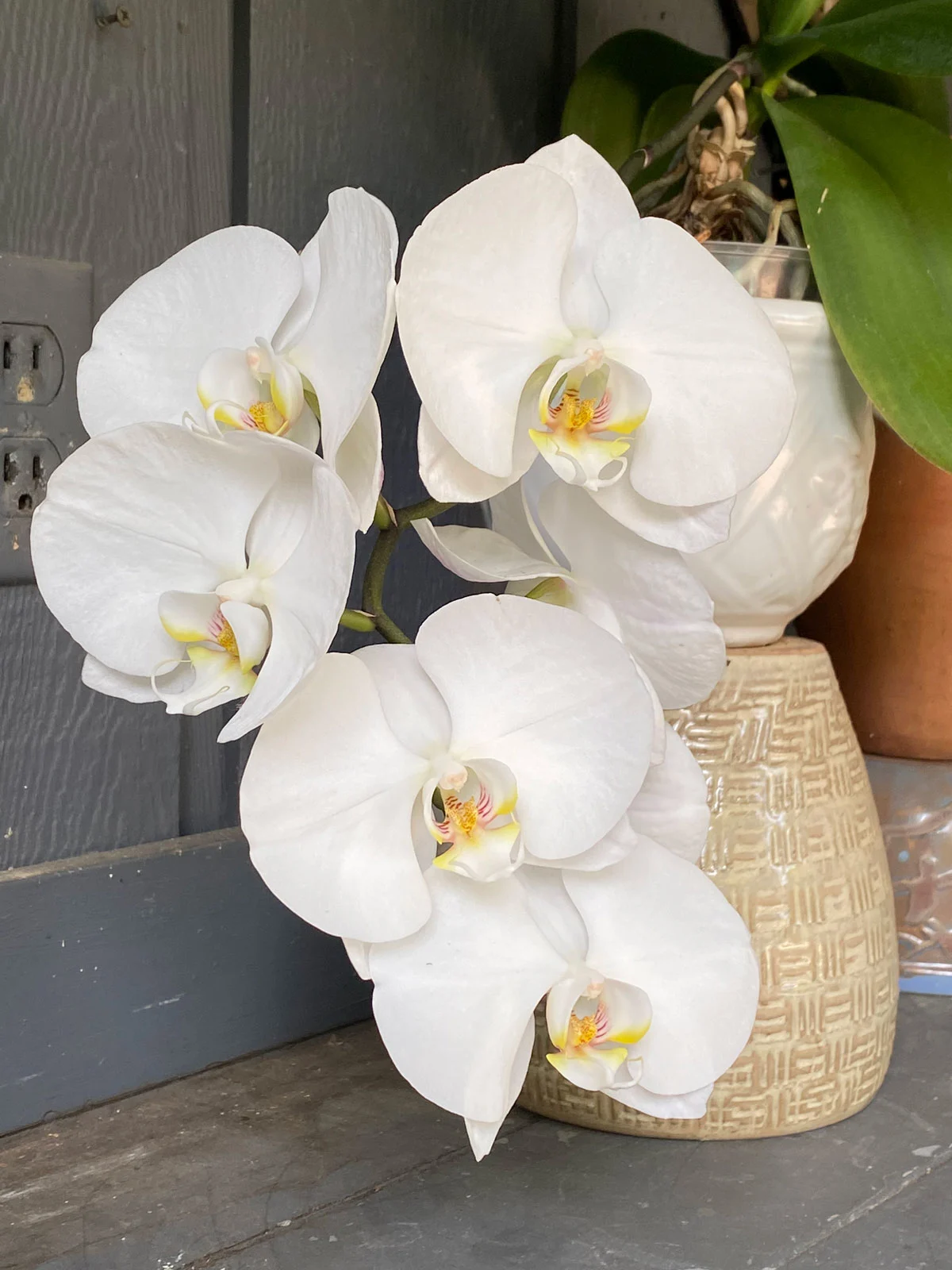
Also consider the amount of light. Too much bright light can also cause your potting medium to dry out too quickly. You want the right amount of light for the plant to be healthy and bloom, but you can have too much light. They don’t need to be in direct sun all day inside (in fact, it can even cause foliage burn).
Your orchid will do well right in front of a window that has only indirect light, but my favorite place to grow these plants is in front of a Eastern facing window where they will get gentle, direct sunlight in the morning. This is enough light to keep them very happy.
Causes for Overwatered Orchids
If your orchid stayed too wet and rotted out, the causes can be many:
- You perhaps let your plant sit in water for extended periods of time (days or weeks). Orchids can NOT tolerate this.
- Your bark mix may have broken down and the medium is staying wet for longer. Orchids need to be repotted every so often!
- If your plant is growing in sphagnum moss and you are on a “once a week” watering schedule, your plant can potentially stay too wet. Use your finger to tell you when to water, not the calendar!
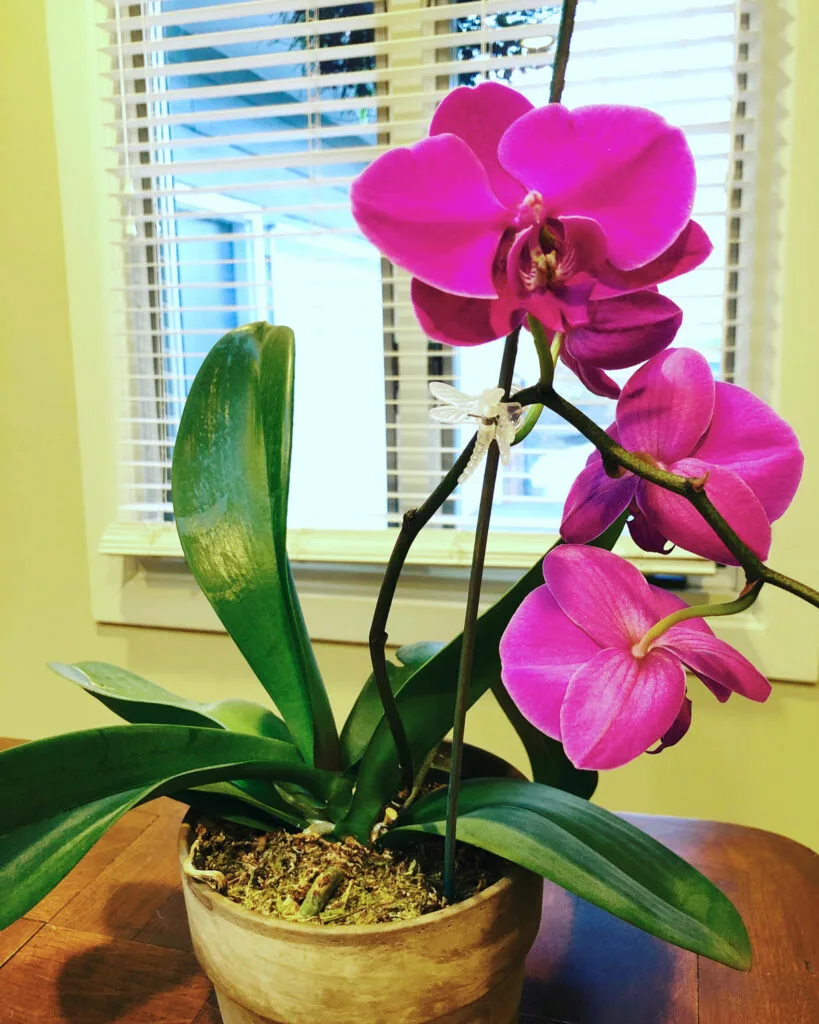
Frequently Asked Questions
Can wrinkled orchid leaves recover?
Up to a certain point, yes they can recover! But only with consistent, proper care. Assuming your leaves are still green, with proper attention to watering (and patiences and time) your leaves can recover. With consistent attention to moisture levels, your orchid plant may also start to grow new roots at the base of the plant.
But it will take a while. Orchids respond more slowly compared to other plants, but with a watchful eye, you can get there.
If you’re starting to lose leaves, check out my blog post on orchid leaves falling off so you can determine what is happening and how to prevent it.
Should I cut off wrinkled orchid leaves?
To best way to approach this is to only cut them off if they have fully yellowed. Moth orchids typically only grow one or two new leaves per year, so leave the old leaves on if they’re green (even if they’re still droopy).
This will benefit the plant.
RELATED POSTS
Hopefully this has helped you diagnose your droopy orchid leaves! For more information on other orchid problems, be sure not to miss Help My Orchid is Dying! How to Bring an Orchid Back to Life for all sorts of orchid issues!
Confused on whether your new growth is a root or flower spike? Be sure not to miss my root or flower spike post where I visually show the difference so that you can easily distinguish between them!
If you’d like a concise, down-to-earth, quick-read guide on growing moth orchids, check out my best selling eBook, Moth Orchid Mastery.
In less than an hour, you will have all the information that you need to grow orchids successfully!


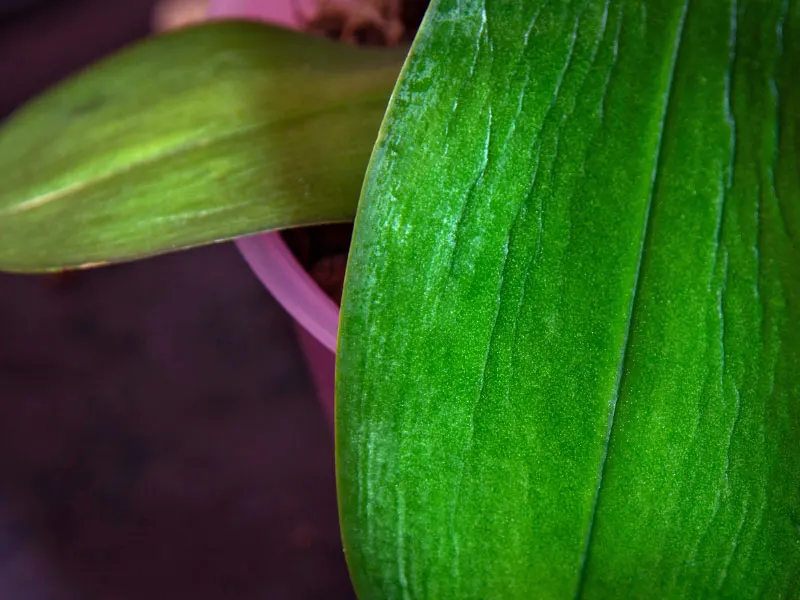
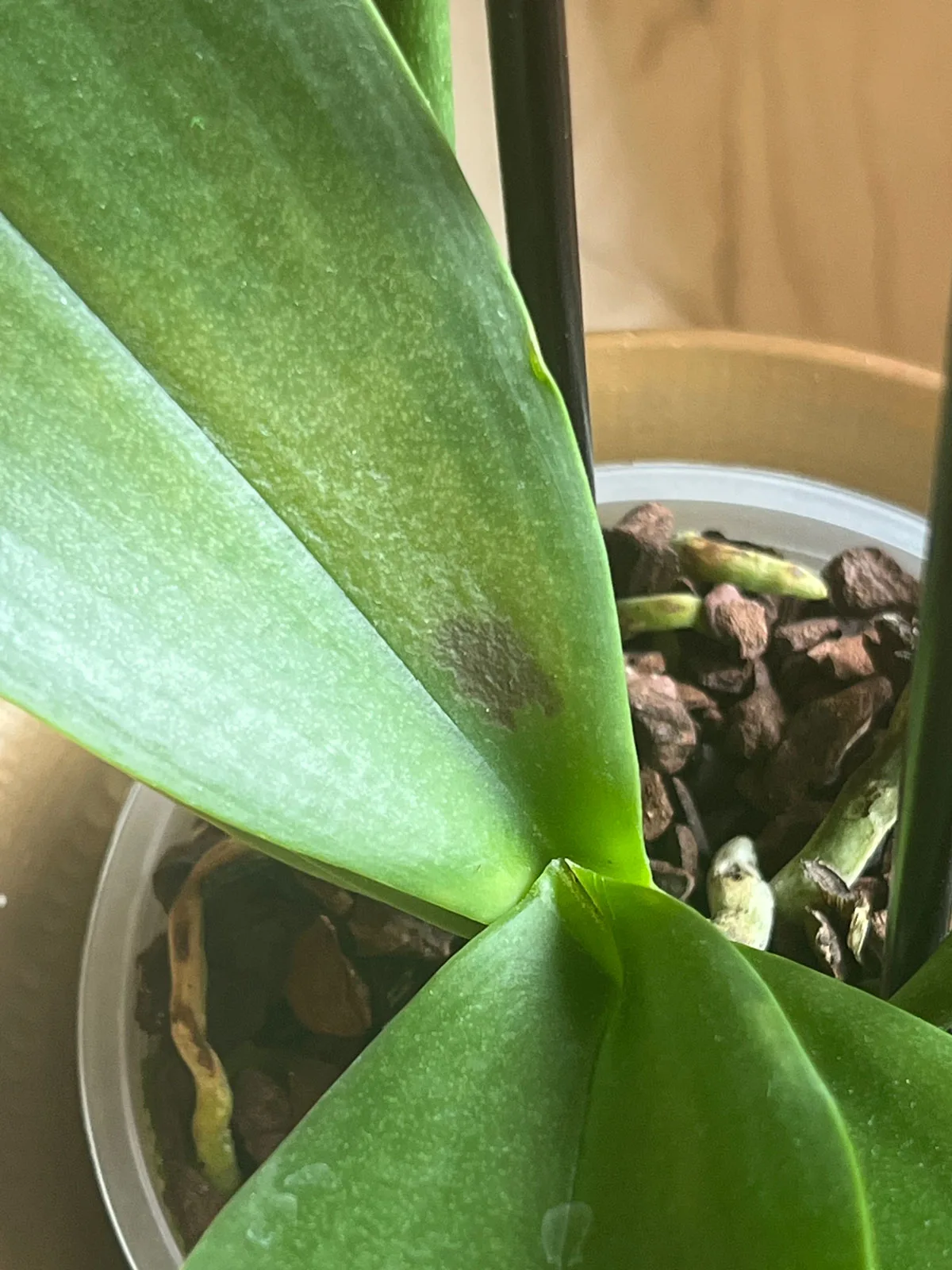
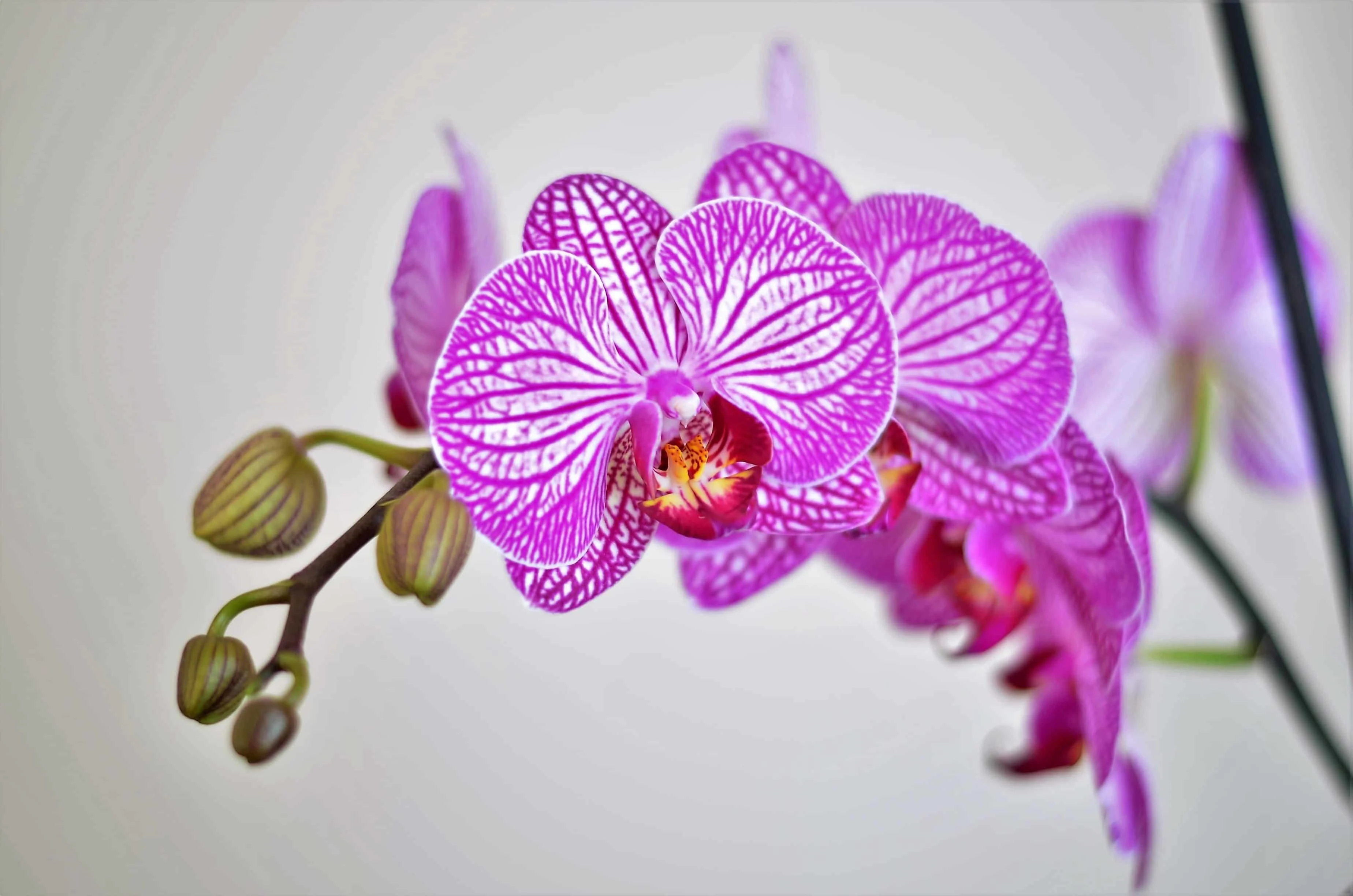
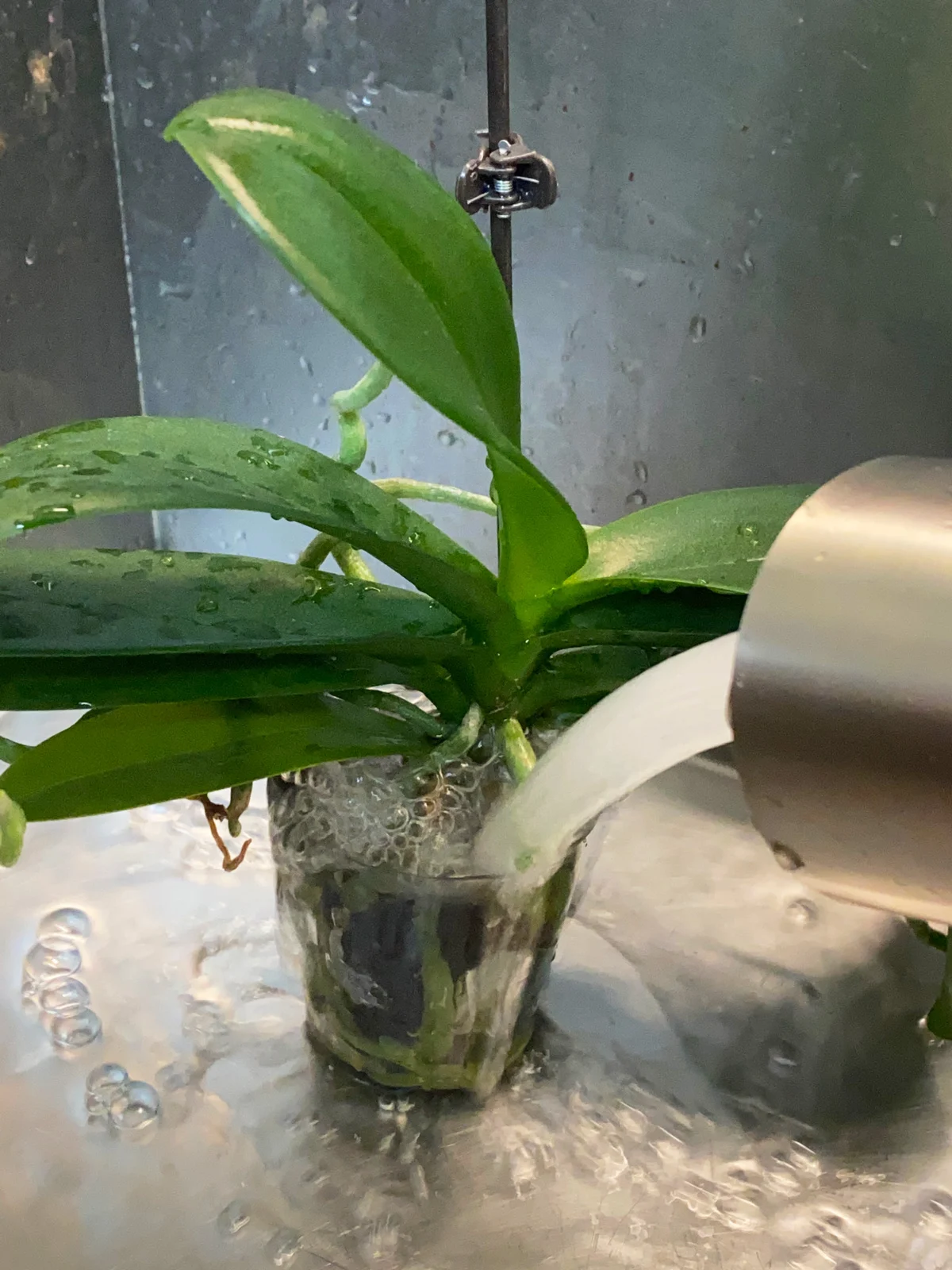
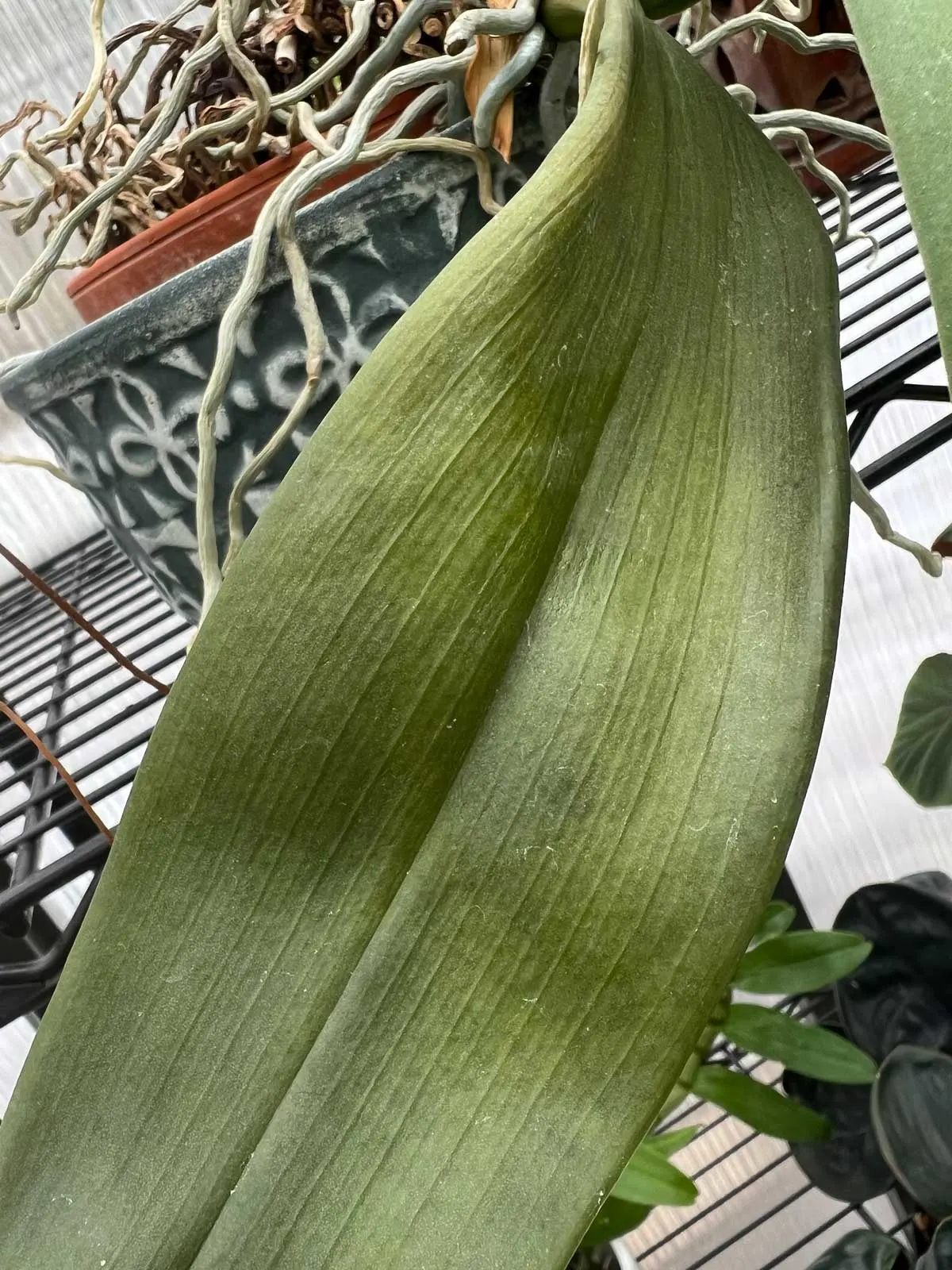
Lacie
Monday 4th of March 2024
Hi there! I am the recent owner of two inherited orchids. One is thriving with a lot of blooms but the leaves are a little sunburnt, one has a brownish tint, and the other has a turned up (bending it). This is all on the same plant with many blooms.
The other plant had two blooms and then they fell off and now it looks dead ☠️. It is growing some new leaves but the whole stem is light brown and dry.
The plants are in clear containers with bark. The one with many blooms is too heavy for the pot and will fall over. I recently bought some orchid mix soil and was going to repot them if need be because the bark looks very dry all the time. Is that necessary to do?
I was told that she waters every 7-10 days using the soaking method for 15minutes. How often should I water?
Thanks in advance for your help!
Raffaele Di Lallo
Monday 4th of March 2024
Hi Lacie! Thanks for all the detail as it very helpful. The truth is that as long as the bark mix has not disintegrated to the point where the roots suffocate, you don't necessarily HAVE to repot. But it does make it easier to keep up with the moisture needs of your plant. If/when you do repot, I would recommend soaking the bark mix in hot water for a day (or even longer) before you use it. It will help to hydrate the bark. I think that a good soak for 15 minutes every week should be great in most cases! You can soak for longer if your plant has gone too dry. Look for clues from your plant though. If the roots looks dry (but not completely shriveled and brittle) and your leaves start to look a little droopy and wrinkly, you'll want to water more frequently and/or soak for longer. Orchid roots are a good indicator of your plant's health. Healthy roots should be round and firm and plump, and should be silvery-white in color when dry and turn greenish when hydrated. I hope this helps a bit!
Alice
Saturday 30th of December 2023
I went to repot an orchid and found it had no root system. Everything was brown and dry although leaves were still green but wrinkled. Can it be saved?
Raffaele
Saturday 30th of December 2023
It's still possible to save it Alice. I would try the following. Get some moist sphagnum moss and fill a small pot with it. Place the base of your orchid on top of the sphagnum and support the plant with a few small stakes so that it doesn't move around. Then place a clear plastic bag upsidedown over the stakes in order to help keep a humid microclimate. With time, your plant should start to grow new roots at the base. Give it a try and keep me posted!
Judy
Saturday 2nd of September 2023
Thank you for this info on how to get my phal orchid to grow a new flower spike, as well as all the other very useful tips you mentioned. 😀
Raffaele
Sunday 3rd of September 2023
You're very welcome Judy!
Betty Rodriguez
Saturday 2nd of September 2023
My plant was used to being on a window shelf with plenty of light, within 2 weeks at my house next to a window the leaves started to drop and half of the leaf turned dark green and drooping, is it in shock?
Raffaele
Saturday 2nd of September 2023
Did it either go completely dry, or on the opposite end, sitting in water?
Jordyn
Monday 5th of June 2023
Hello. I've had an orchid for a little over a month now. About 3 weeks into me having it I repotted it. Before I repotted it, I noticed that one of the bottom leaves was starting to droop and wrinkle but nothing too crazy. The instructions we got for the plant was to water it once a week with 3 oz of water and we continued that trend. It was in a small ceramic pot at the time so we couldn't see or know to pay attention to the root system. I repotted into a bigger pot and I didn't soak the medium before repotting because the type I got said the the medium was already presoaked and I did not need to do that. I searched for the best ways to water an orchid after repotting and I figured the best option for my plant would be to run it under water for a few seconds. However, I noticed that my bottom leaf was progressively getting worse and eventually fell off and the other bottom leaf is starting to do the same thing. That's when I decided to do my research to try and figure out why this was happening. That's when I stumbled across this website. I determined that my plant is too dry, so I soaked it for the first time 3 days ago. I come to check back on the orchid today and the roots look dry again. It is in a clear slotted pot so could that be the reason it is drying out more? I'm a little nervous that I'm killing my plant. I know that things are not gonna change overnight but I wanna make sure I am providing the best care for my orchid. Before soaking it, anytime I noticed the roots looked dry (which was everyday) I would run it under water for a few seconds. I don't want to over water it but I also don't want it to die. Do you think I should just stick with soaking once a week for a while and see if I notice any changes? Or is there any other course of action you think I should take? Thank you
Jordyn
Tuesday 27th of June 2023
@Raffaele, Thank you so much!
Raffaele
Sunday 11th of June 2023
Hi Jordyn! I would not measure the amount of water. I would use method #2 in this post: https://www.ohiotropics.com/2021/07/20/how-to-water-orchids/ and for any exposed aerial roots, mist those every day if you can. You will not be "overwatering" them :-) Hope this helps!